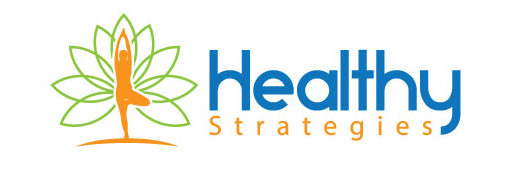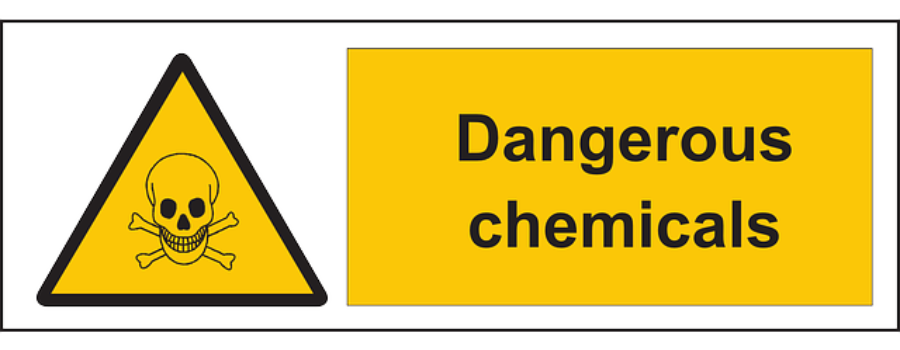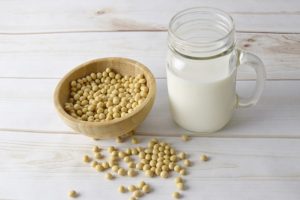Avoiding these 10 Chemicals May Boost Our Immunity Even in the Fight Against COVID-19
As we deal with COVID-19 pandemic, many people wonder what can be done to increase our immunity, to be able to fight off this infection without letting it become serious. Beside the basic rules that CDC advices, more or less verified suggestions are the use of vitamins C, D, and zinc supplements. Nobody knows if these may help to a certain extent, but at reasonable doses probably can’t hurt. They at least make us feel better we can take something that might be useful, but hopefully without a sense of false security that would affect social distancing and the other recommended measures.
Having had done my research about what we put in and on our body, I read some medical articles that show that a lot of chemicals we’re using every day, in one form or another, can actually decrease our capacity to fight infections.
I came across a statistic that shows that in the low income countries, infections represent four out of five top causes of death. In high income countries however, lower respiratory tract infections remain in the top five causes. This was a big surprise for me.
For the same infectious agent, some individuals develop a mild form, while others a dramatic one. Sure the genes, age and underlying health conditions have a strong say in these. We clearly learned that smoking contributes to more severe infections, but how about other environmental factors, air, soil, and water pollution? How about pesticides? Can they play a role?
White cells of all kinds can be affected more or less by different chemicals. Some pollutants (#1 and #2 below) were banned since 1979, but because they’re so persistent in the environment, their effects on immunity were better studied. Moreover, we’re still all exposed to them even now and they continue to be present as contaminants in certain commonly used products. Some researchers state that “developmental exposure to the environmental agents impacts adult life.”
It’s not that important to memorize the complicated chemical names as I mention them. What’s more important, is to remember where we can come across these as well as some ways we can minimize our exposure nowadays. You’ll figure it out as I go through them and see more suggestions at the end.
1. TCDD or dioxin is a by-product of many manufacturing processes (certain herbicides, for instance), and can also be released with municipal and medical waste incineration, chlorine bleaching of paper, and forest fires. Because of a few industrial accidents and their presence in Agent Orange (a pesticide used in the Vietnam War), long term effects in humans were studied and still are.
Dioxin, used to poison the Ukrainian politician Viktor Yushchenko in 2004, is also responsible for a form of acne called chloracne. This feature makes me wonder if some cases of terrible acne that doesn’t respond even to aggressive treatment, may be linked to this contaminant from the foods they eat or other sources.

2. PCBs (polychlorinated byphenyls), were used in old fluorescent lights (that can leak PCBs if the ballasts fall), old transformers, as well as carbonless paper (not much used nowadays).
Although banned for over 4 decades, because their persistence in the environment, PCBs can still end up un our food (fish, meat, dairy) or drinking water. Fish (from contaminated waters) is a major source, but farmed salmon is too, because of the contaminated fishmeal. PCBs accumulate in the fat that the salmon usually contains. Not frying the fish, but grilling or baking it using a rack in the pan will allow any fatty substances to drip out, can minimize the amounts we end up eating.
Animal feed contributes to the amounts of PCBs detected in meat and dairy, for the same reason: accumulating in fat. The plants take up only minimal amounts of PCBs if the soil is contaminated. However, in the case of the grass-fed cows, if the grass is “powdered” with the related dioxins, these will end up in the fatty part of beef and milk.
Mayo Clinic says PCBs “can be transferred from mothers to babies causing preterm delivery, low birth weight, and affect immune, nervous end endocrine systems.
Just as important is that PCBs still occur as contaminants in commercial paint pigments (azo and phthalocyanine pigments). The synthetic colorants have a widespread use, not just in paints but in coloring certain textiles, leather, paper, cosmetics, ink (newspapers and magazines!), plastics, and even some foods. With these many products, we can be exposed to them through touch, inhalation, and even ingestion. Knowing where they can “show up” gives us some knowledge to avoid them as much as feasible.
3. Polycyclic aromatics hydrocarbons (PAHs), are petroleum derivatives that can occur from combustion of fuel, tobacco, and garbage. Just like dioxins, they can occur with waste incineration and forest fires. They can contaminate many cosmetics made with petrolatum, petroleum jelly, mineral oil, or paraffin oil.
More recently, it was shown that grilling meats at high temperatures also produces them, especially when using charcoal and lighter fluid. These can be minimized on gas grills without cooking at high temperatures, managing the flames, trimming out the fat ahead of barbecuing,
Carbon black (from burning coal tar), is also contaminated with PAHs and used in makeup, mascara, eyeliners and nail polish.
Increased occurrence of respiratory and ear infections, cough, and sore throat were observed in children with higher early life exposure to dioxins, PCBs and PAHs.
4. Toxic metals such as arsenic can be present in contaminated ground water; that’s why a good water filter becomes really important.
5. Pesticides exposure can occur during their application, drainage in the water supply, and contaminated foods. Organic crops are not meant to have the toxic pesticides used on them. I read that removing residues from conventionally grown fresh fruits and veggies with a baking soda solution (whenever feasible), seems somewhat useful. The problem, the way I see it, is that conventional farmed crops are sprayed with pesticides multiple times (at different stages), and some amounts end up inside, not just on the skin. Removing the skin without thoroughly washing the fruit first, can contaminate the inner part as wells our fingers.
6. Fire retardants like polybrominated diphenyl ethers (PBDEs), are some PFCs-related chemicals and there are many suggestions from consumers’ advocates to avoid buying or replace the products (upholstered furniture, carpets and clothing), treated with them.
7. PFOS/PFOAs, are now considered the new “forever chemicals” because of their persistence in our body and environment. They are used in the non-stick cookware, water and stain repellant carpets and clothing. Many of us are more familiar with some of their brand names, such as Teflon, Scotchgard, Stainmaster, or Gore-Tex. They are also present in fast-food wrap, pizza box liners, microwave popcorn, some brands of single use paper plates and cups.
8. Solvents, such as toluene and trichloroethylene (TCE) are used in paints, adhesives and cleaners. Volatile organic compounds (VOC)-free paints can protect us from these solvents and PCB’s. Useful to know that organic dry-cleaners don’t use TCE.
9. BPA (bisphenol A), widely present in polycarbonate plastics (recycling code #7), was used in baby bottles, although not anymore. It continues to be used in food containers and warming anything in them, will allow the BPA to leach. Plastic food wrap is often made with BPA, but BPA-free is not necessarily safer because the product can contain BPS (bisphenol S) or phthalates instead. BPA is also used to make epoxy resins that line the cans for foods and drinks. Because it’s a “lining,” not a chemical bond with the material the cans are made of, it can easily leach in the food, Known as a strong estrogen substance, it’s investigated as altering the immune function and some animal models show significant findings.
10. Phthalates used to soften plastics and vinyl are present in plastic food wrap, shower curtains, floor coverings, medical equipment, and in cosmetics (under the disguise “fragrance”); it was used in soft plastic toys (the rubber duck), but more recently banned. Some phthalates were banned because their link to cancers, but some studies suggest increased risk of respiratory infections and allergic reactions in chidden exposed to phthalates early in their life.
How do these chemicals impair our response to infections?
They can decrease the function of scavengers cells (macrophages), can impair the function of all white cell lines (neutrophils and lymphocytes), and natural killer cells that fight germs, they decrease the production of antibodies in response to infectious agents, and can even decrease the antibodies production after vaccinations. Many times I did come across blood tests showing lack or lower than expected counts for antibodies in people who received appropriately scheduled vaccinations.
Some of these chemicals are linked to allergies, ranging from nasal symptoms to allergic asthma, while some components appear to increase the risk of developing leukemia in children, and keep in mind, this is when parents are exposed! The exposure before we were born or at early ages has a great impact throughout our lives. This research information is derived from animal models and humans studies—many being epidemiological ones.
Researchers in a particular article say that “Deregulation of any one of these aspects of immune function could lead to an impaired ability to mount an immune response, increasing susceptibility to infection. On the other hand, an overactive immune response could exacerbate pathology through the excessive damage of healthy tissue. Clearly, a proper balance of immune function is critical.” This may explain why some COVID-19 cases are so devastating in people who are not that old and relatively healthy.
Avoiding these chemicals starting now may not make a huge impact in our response to COVID-19, but since this pandemic will unfortunately last at least another few weeks (and extend even longer), maybe small changes could go a long way, and may allow a new generation of healthier immune cells, untarnished by some chemicals, to come out and fight:
- smoking cessation can improve the function of cilli (hair-like projections in the breathing pipes) that help clearing out particles, beside avoiding many toxins from tobacco smoke that makes smokers more prone to infections.
- opting for foods in glass jars instead of the canned ones, although more difficult to do it at the moment; avoiding plastic food wrap to comes in contact with the food (by using paper wrap first), eliminates some PBA exposure as well as phthalates
- cooking in stainless steel or cast iron if we have some in our homes (or it’s easy to order online),
- avoiding dry-cleaners (not that necessary when we’re in isolating at home), that use TCE and consider organic cleaners
- avoiding makeup and cosmetics that can contain or be contaminated with some of the toxins I described above (carbon black in mascara, eye-liners, nail polish and phthalates as fragrance), can also be helpful; this cosmetics part is easier to “comply” with now, when many are staying home.
With so many businesses not operating, the decrease in the air pollution is definitely noticeable. After the pandemic is over, changing more products can help us and especially our children in the future.
I will end with a quote from the same striking article: “Furthermore, infectious agents and infection-associated inflammation are among the major causes of cancer, with as many as 15% of cancer cases resulting from infections. Thus, subtle changes in immune regulation that perturb immune function have far-reaching health consequences as they can directly impact susceptibility to infections as well as increase vulnerability to cancer.”


